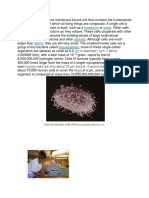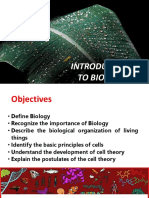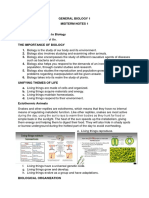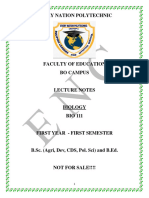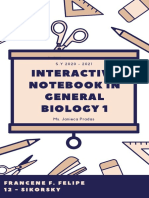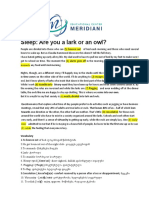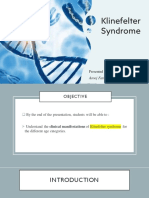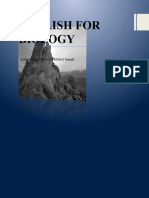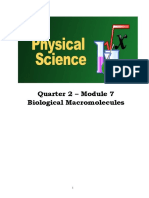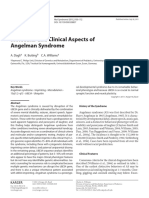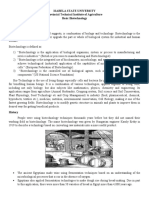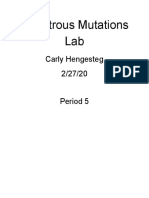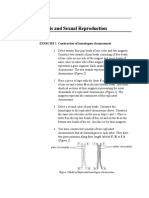0% found this document useful (0 votes)
138 views4 pagesModule 2 - Basic Principles of Cell & Cell Theory
This document provides an introduction to basic cell principles and the cell theory. It discusses the main components of eukaryotic and prokaryotic cells. The key cellular processes of photosynthesis, respiration, endocytosis, exocytosis, cell migration, DNA replication and protein synthesis are summarized. The three main points of the cell theory proposed by Schleiden, Schwann and Virchow are outlined - that all living things are made of cells, the cell is the basic unit of structure and function, and cells come from pre-existing cells.
Uploaded by
Ysabela Dela PazCopyright
© © All Rights Reserved
We take content rights seriously. If you suspect this is your content, claim it here.
Available Formats
Download as PDF, TXT or read online on Scribd
0% found this document useful (0 votes)
138 views4 pagesModule 2 - Basic Principles of Cell & Cell Theory
This document provides an introduction to basic cell principles and the cell theory. It discusses the main components of eukaryotic and prokaryotic cells. The key cellular processes of photosynthesis, respiration, endocytosis, exocytosis, cell migration, DNA replication and protein synthesis are summarized. The three main points of the cell theory proposed by Schleiden, Schwann and Virchow are outlined - that all living things are made of cells, the cell is the basic unit of structure and function, and cells come from pre-existing cells.
Uploaded by
Ysabela Dela PazCopyright
© © All Rights Reserved
We take content rights seriously. If you suspect this is your content, claim it here.
Available Formats
Download as PDF, TXT or read online on Scribd
/ 4
